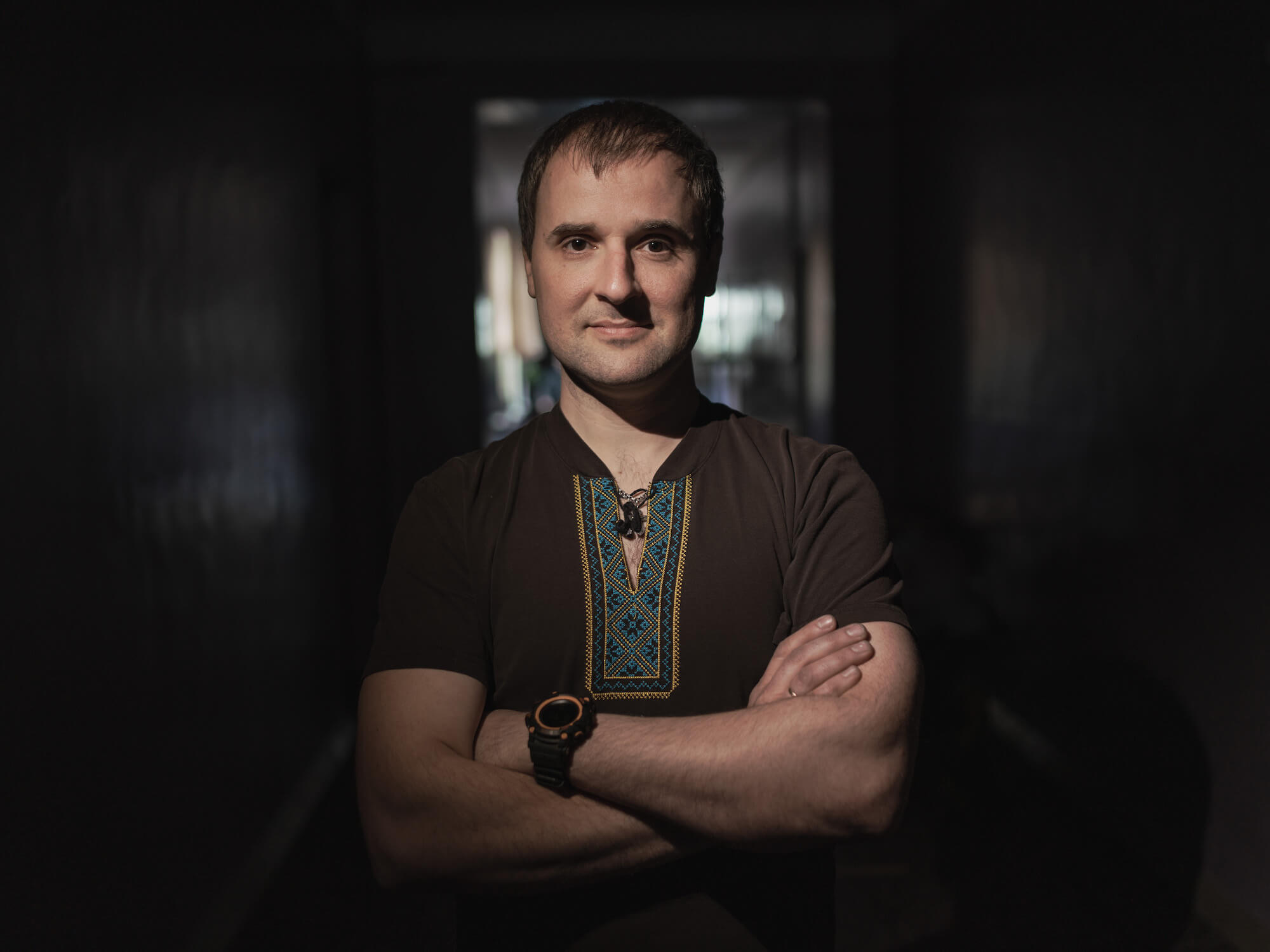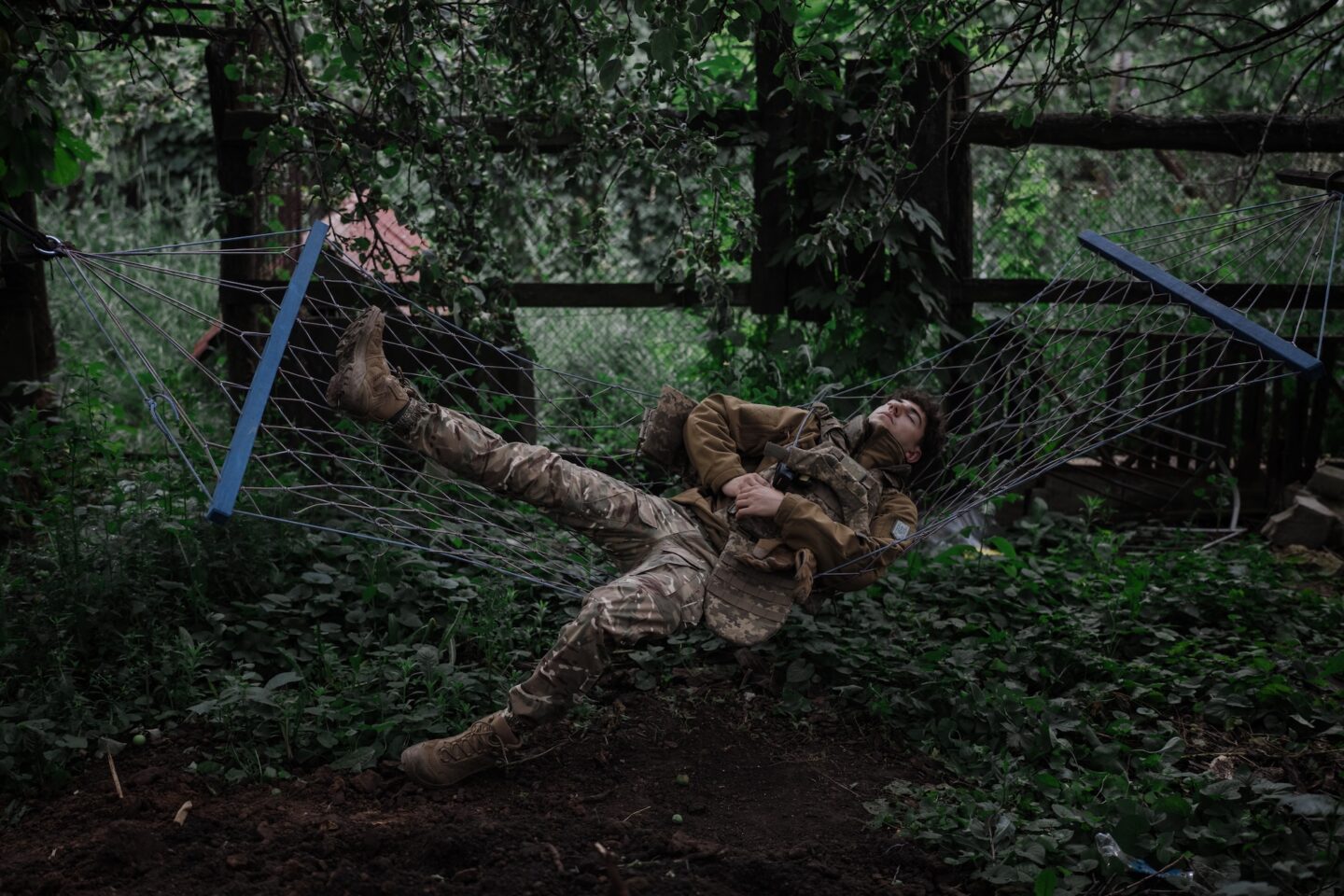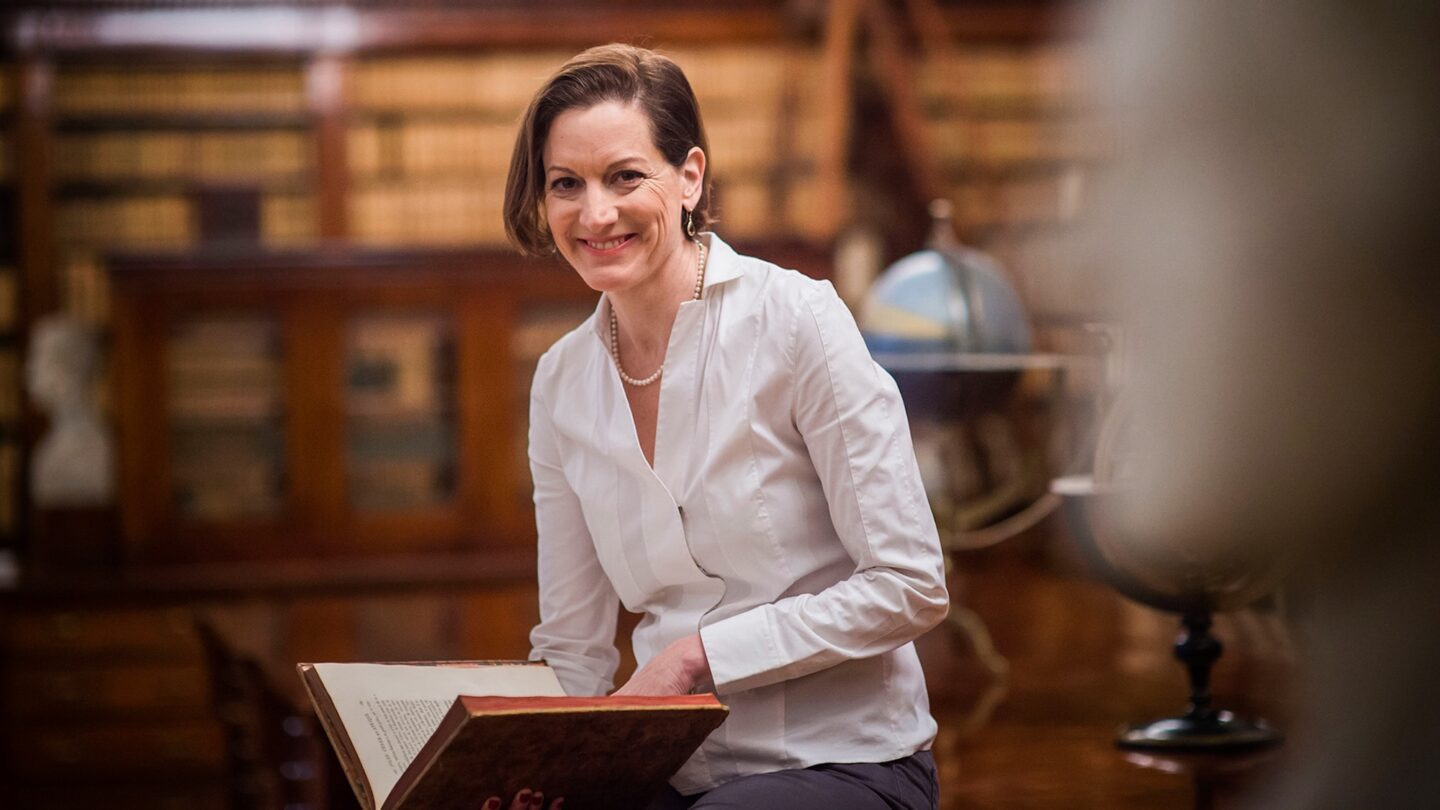“Why do I like going to the front now, and why did I enjoy my work in Irpin? People accept you for who you are. They do not ask you what your job is or where you come from. They look at what you do. Whether you stand by your words. Whether you bring them what you promise. Whether you deliver on your promise,” says Anton Senenko, a volunteer and physicist.
Until February 24, 2022, Anton, just like other Ukrainians, lived a completely different life and did not plan the drastic changes that happened to him later. Before the large-scale invasion, Senenko was a prominent scientist and science popularizer with a large Facebook following eager to keep track of science in Ukraine.
We spoke with Anton twice: the first time less than a month before the Russian invasion and the second time in September 2022. In early 2022, Anton met with us at the Institute of Physics of the National Academy of Sciences of Ukraine to share his experience as a popularizer of Ukrainian science. During the second interview, Senenko told us how he and his volunteer friends worked for the sake of Ukraine’s future, saving the lives of Ukrainians in the combat zone.
§§§
The Ukrainians Media is an award-winning independent media company focusing on high-quality, long-form, and visual journalism. Our mission is to foster positive social changes in Ukraine.
This story was created thanks to the support of our readers. Please join The Ukrainians Community on Patreon and help us publish more important and interesting stories.
§§§
On February 23, a little more than two weeks after our first conversation, Anton prepared everything necessary for the next experiment he was going to conduct in his laboratory the following day. But instead of exploring how molecules of yet another organic compound behave in ultrathin films, he took his wife and eighteen-month-old son Marko to the west of Ukraine, where his family crossed the border fleeing the full-scale war.
Anton returned to Kyiv with his friend Andriy Piven. On the way back, they thought about what to do next. They decided to go back to volunteering. In 2014-2015, Anton and Andriy wove camouflage nets and held fundraisers in the scientific community to buy gear for small military units in the east of Ukraine.
As soon as they returned to Kyiv, the two friends started helping people they knew: they delivered food and medicine to some of them across a half-paralyzed city, and took others to the train station. Soon they met other volunteers, and together they delivered the first relief supplies to the town of Irpin, just outside Kyiv. The town was under Russian shelling. There was fighting in the streets.
The hardest day in his life
In Irpin, the volunteers were encircled on March 5, and the situation Anton describes quickly became confusing and then hopeless. Catching the sparse cell phone signal, Senenko made a few calls: to his mother, his wife, and his friend, whom he asked to take care of his family in case he could not leave Irpin alive. Fortunately, Ukrainian marines helped him and his friends get out of the encirclement. But for Anton, that day was the hardest in his life.
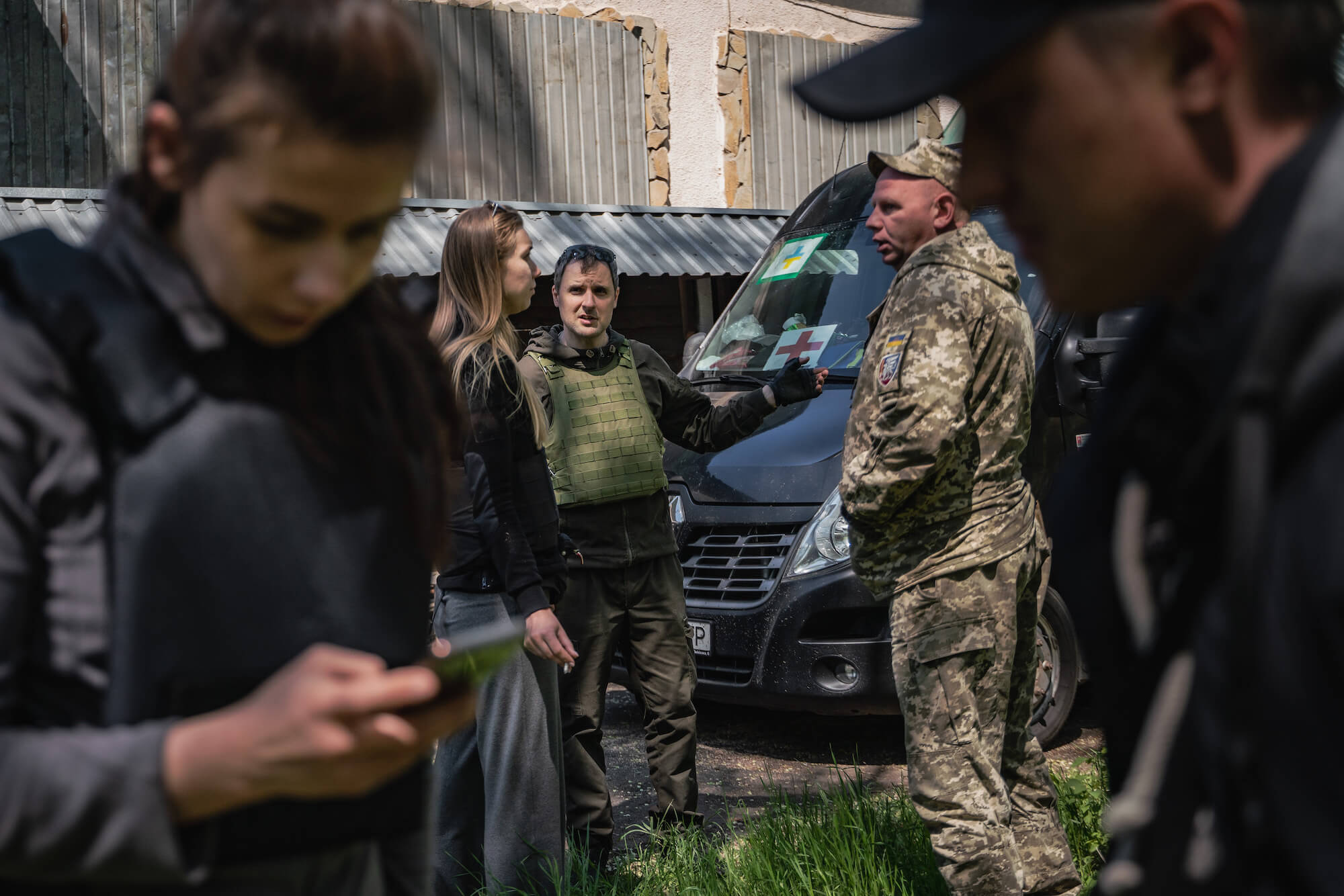
It became clear that the residents of Irpin, who were still in town, had to be evacuated urgently. This is what the volunteers did for the next month. Later, Anton worked with the same group of volunteers in the Chernihiv and Kharkiv areas.
In May, Senenko returned to the Institute of Physics of the National Academy of Sciences of Ukraine, which he had joined twelve years ago to earn his doctorate and where he now worked as a senior research associate. He resolved to work as much as his mental health would allow. The hostilities raged in the east and south of Ukraine while Anton was giving his lectures to doctoral students.
Senenko said that in recent months he had been in a state of ‘life schizophrenia or dichotomy.’ From Monday to Thursday, he worked at the institute, and in the evenings, he drove around town to collect bulletproof vests, jam jars, tactical medical equipment, and many other things that soldiers on the front lines needed.
On Friday (the day off at the Institute), he and other volunteers loaded all these things into their cars and headed south or east.
“What saves me is that my family is far away. I do not see them, and at home, I have nothing to do. Nothing at all,” Anton said. “And I just can not stay at home. I only return to spend the night there.”
During the six months of the war, Senenko, a physicist, became more athletic. He had been keeping fit for a long time, but when the war broke out, he added intensity to his workouts. First, wearing a bulletproof vest and helmet during trips to the front was not easy for a senior research associate whose career had not prepared him for such a thing. Second, the workouts had stress-busting benefits. Anton was fortunate that his mate Andriy was a professional fitness trainer and now doubled as his personal coach.
“I love driving”
Senenko and his fellow volunteers pooled their efforts and created the Hurkit charity fund to collect donations and buy cars abroad. They bring them to Ukraine, repair them, and deliver them to the Ukrainian military on the front line. When we met, Anton had already personally delivered fifteen cars to Ukraine. In total, he has driven about 60-70 thousand kilometers since the large-scale invasion began.
“I love driving,” Anton says. “When I was a child, our family did not have a car, but I dreamed about it. And I see some destiny or karma in the fact that dozens of different cars have passed through my hands so far.”
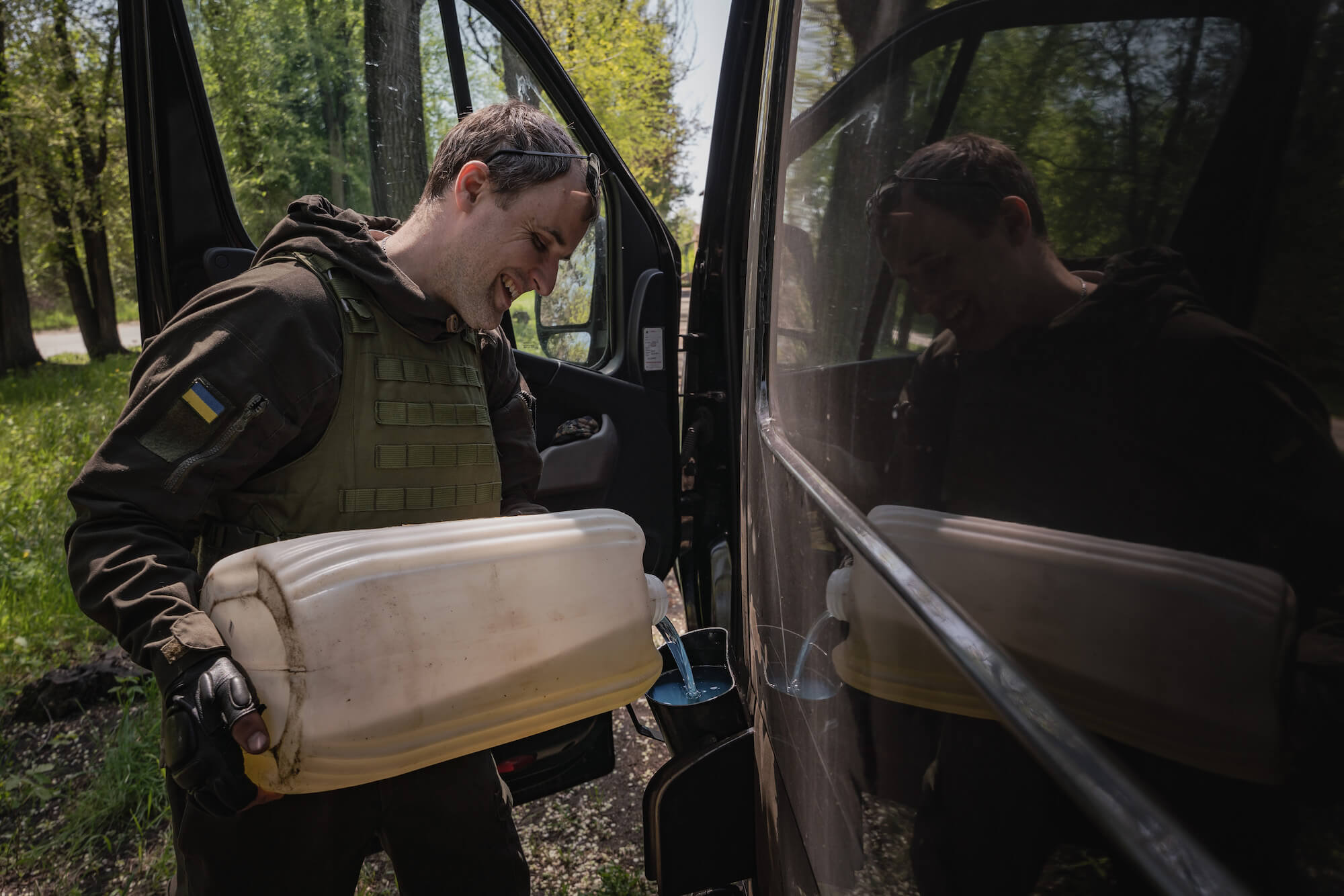
“First, I enjoy seeing a broken down, not-quite-working car come in and us fixing it up so it becomes fully functional and pretty decent. Second, I enjoy the process of driving it when I take it to Ukraine. Third, it’s really nice when the soldiers thank us and later send us photos and videos of their work. It’s a great feeling to know that you helped this or that military unit become more mobile. Sometimes these cars even save lives when they drive over mines and protect the fighters from splinters with their steel bodies. It’s great to know that our warriors can pop out of nowhere on these pickups, give the Russians a good beating, and then quickly back up and leave.”
Popularizing others
And yet, one thing in Anton Senenko’s life has not changed in the last year—the number and length of his Facebook posts. Anton gives a lot of interviews and comments, but today he talks mainly about his trips to the de-occupied towns and villages, about the military and their needs, and about fundraising and other volunteer efforts.
Still, Senenko regularly returns to his old habits and posts about science: about the launch of the Artemis I space mission to the moon or about his colleague from the Academy of Sciences of Ukraine, Olha Zakhozhai, who discovered a very special exoplanet (that’s what astronomers call planets orbiting other stars). Anton can only dream of popularizing science to the extent he did last year or two years ago. He says that when he starts writing again about Ukrainian researchers, education reform, plagiarizing ministers, and ‘lepton gods’, it will mean that volunteers like him are thankfully no longer needed.
Anton Senenko admits that years of experience in popularizing science, which gave him a large readership, help him a lot in his volunteer work. When he and Andriy lost their car in Irpin in early March 2022, Anton posted about it on Facebook.
Three friends—all connected to science or public activism in one way or another—responded to his post within hours, offering their cars.
“Many subscribed to my account long before the full-scale invasion. They’ve known me for a long time and trust me as a researcher,” Anton says. “They donated six or seven thousand euros for military gear without hesitation. Four or five cars, I do not remember exactly, were also donated. In those cases, my reputation has had a positive impact, and I really appreciate that.”
“Where are your inventions?”
The voice of the Ukrainian research community was one of many on the Maidan in 2013.
The Revolution of Dignity spawned popular science festivals, lecture series, media projects, and blogs that popularized science. Aspiring researchers and even real rock stars of science, such as botanicist Oleksiy Kovalenko, biologist Olha Maslova, and physiologist Oleksiy Boldyriev, joined the community of publicly visible researchers who were on par with the white-haired patriarchs.
If there were a ranking of the most publicly visible Ukrainian researchers, it would be headed by representatives of three groups. The first group are engineers and doctors who died long ago. The second group are young winners of all kinds of invention competitions. Sometimes they make really fascinating inventions, but their relation to real science is indirect. The third group are influential contemporary researchers who have been working abroad for a long time, although they have Ukrainian names, come from Ukraine, and achieved their first professional successes here. For example, Maryna Viazovska, mathematician and Fields Medal winner.
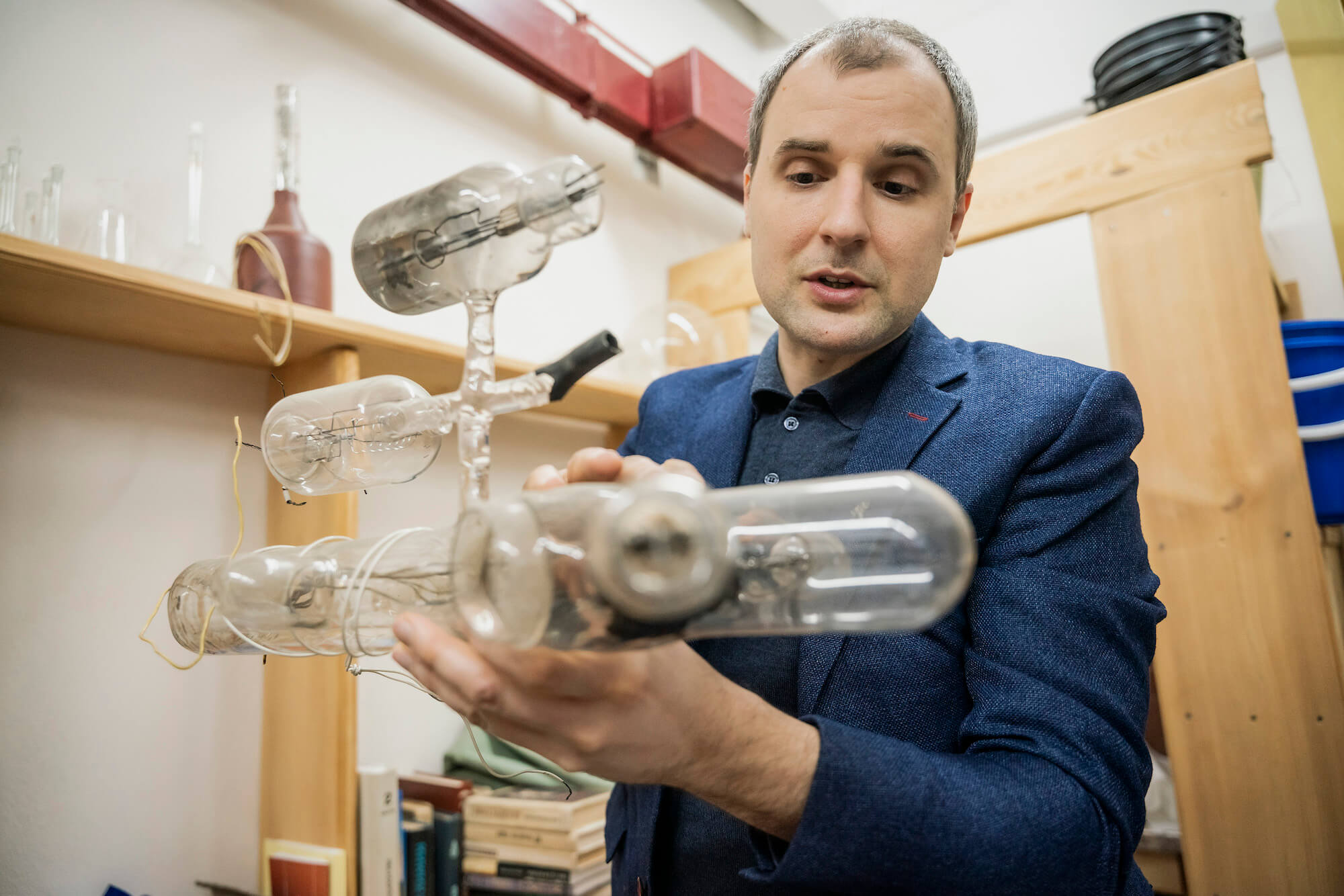
In other words, all these famous researchers are either not yet researchers, represent another country, or have long been part of history. Apart from these three categories, there is a smaller group of contemporary researchers who are known beyond their narrow professional community. Anton Senenko is one of them.
In 2015, when hardly anyone but his fellow physicists knew about him, his first blog post appeared on site.ua. Entitled “FAQ about science in Ukraine. The list of inventions of Ukrainian researchers,” it was written in Russian.
Anton posted about two dozen inventions of his colleagues from the National Academy of Sciences of Ukraine. All of them can be used in practice in this or that field or are already in use. People from the ‘parallel universe’ knew nothing or almost nothing about most of them.
However, some of these inventions, such as the electric welding of living tissues, a technology used in surgery, were reported in the major media when Anton was still in school.
Anton’s list of innovations provided a clear answer to a favorite question of critics of Ukrainian science: “Where are your inventions?”
An aspiring scientist and other discoveries
In his post, Anton also answered other questions that many people wondered about: Why have Ukrainian scientists not yet received the Nobel Prize? Why does the state have to fund something called ‘quark-gluon plasma research’? Why are the researchers so poor if they are so smart? And so on.
The blog entry attracted a lot of attention in the media, and journalists began to change their coverage of science, explaining that the problem was insufficient government funding. However, even under these conditions, Ukrainian researchers were producing useful innovations.
Not only the blog post but also its author, an aspiring researcher, attracted attention. Since then, Anton has been blogging regularly about science on site.ua and on his Facebook page. He became a frequent guest on TV and wherever someone wanted to know what was happening in Ukrainian science and why researchers did not have it so easy. Journalists knew who to turn to when they wanted to write ‘a piece about science.’ If Senenko could not comment on a particular topic, he could always recommend who to reach out to.
From the outside, it might even look like he was not doing science, just communicating about it—especially considering that Anton talked about someone else’s accomplishments much more often than his own.”It was not always like that. When I started popularizing science in 2015, I published my ‘lab notes’ on site.ua. There were several articles about things I did,” Anton says. “But I do not think it makes sense to keep writing about something I’ve already written about. The objects of research—the molecules I work with—change, but other, more understandable things I could tell people outside the research community stay almost the same.”
An ultra-thin area of expertise
The research objects Senenko is talking about are ultra-thin films created by a layer of molecules or atoms. He places these films on a special plate and studies their properties with a special device called a scanning tunneling microscope.
These molecules have been known for a hundred years, and researchers have long studied their behavior in solution. However, it turns out they can behave in a completely different, unexpected way when they are not in solution but in an ultrathin film.
Knowledge of their behavior might be useful for developing some technology—or not. Roughly speaking, Anton does not care because his field is fundamental research. So he is one of those looking for an answer to the question, “How is this organized?” or “How does this work?”
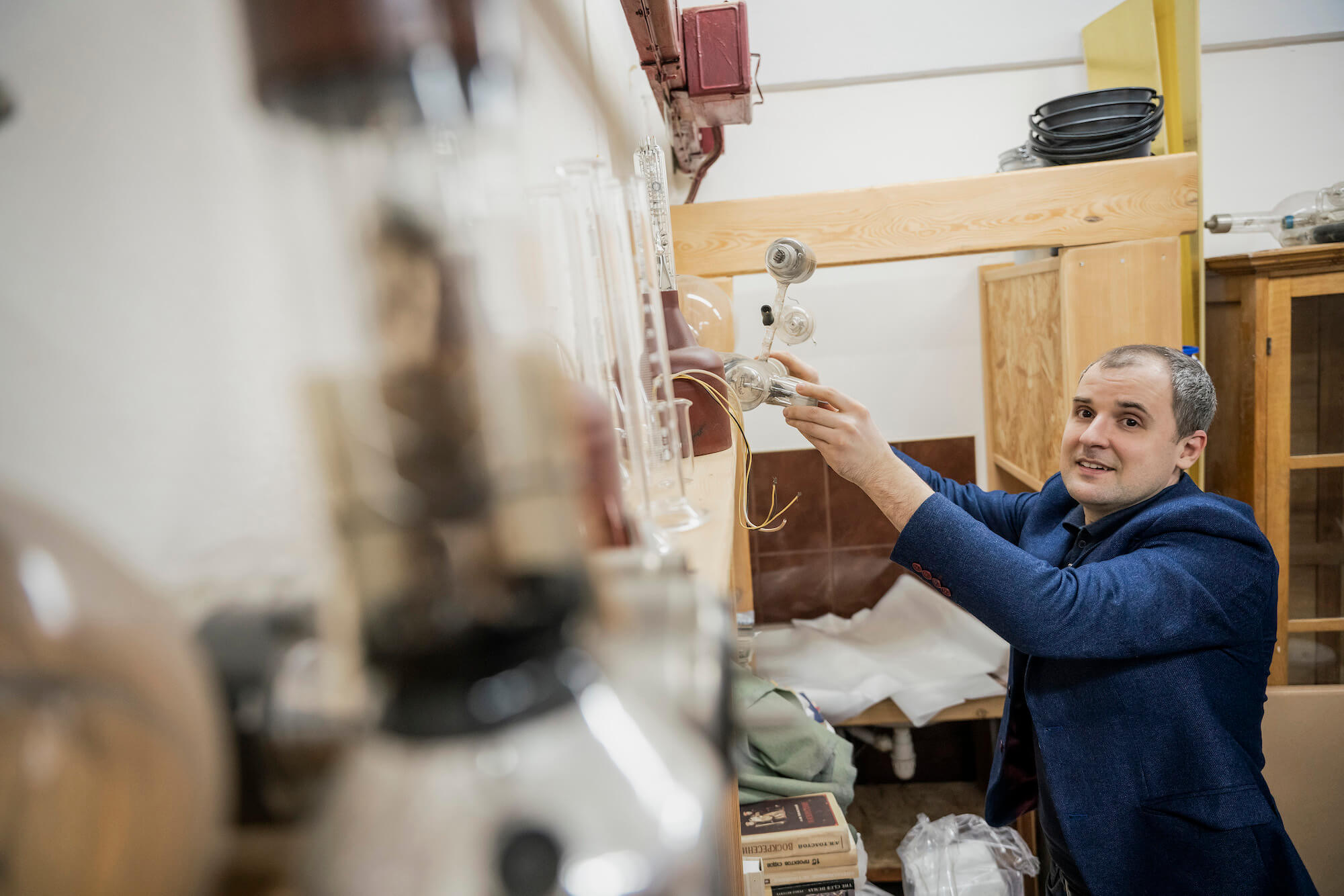
In the future—one year or twenty-five years later—other researchers will try to solve an applied problem. Perhaps they will find the necessary answer among Anton’s findings. Or maybe they will not. No one can predict—and that’s what’s so special about fundamental research.
Here’s just one example of how that might work. There are molecules capable of photoswitching. When you put them on a surface in the shape of a film, they arrange themselves in a certain order—much like parquet planks on the floor. If you irradiate these molecules with ultraviolet light, they arrange themselves differently—like square tiles instead of parquet planks.
But the most important thing is that the coefficient of friction on this surface sometimes changes three times during this transformation. And that could be used in a technology that targets some practical needs.
Anton spent five days a week researching the ultra-thin matter. Officially, though, it was only four days because most Ukrainian researchers worked part-time—not by choice.
And on the weekends—he did not have children then—he did only one thing: create his ‘popular science content.’ On Saturday, he gathered the information for a new issue of his regular roundup—everything that had happened in science and related fields in the previous week. On Sunday, he polished off the text, and on Monday, before work, he published it on site.ua.
“A colleague came by today and said, ‘Oh, you have so much gray hair.’ But I feel like I started going gray back in 2016. Maybe it has something to do with promoting science,” Anton said, laughing.
Inna Senenko, a holder of a Ph.D. degree in economics and Anton’s wife, said she accepted the fact that promoting science was a task that required a lot of effort, responsibility, and time.
“The question I hear most often about Anton is, ‘How does he do it all?’ Honestly, I wonder that myself. I guess he knows some secret,” Inna said. “But seriously, it has to do with Anton’s great passion as a researcher to share the information he finds important and fascinating.”
A shadow press office
A few years ago, Senenko had a friendly conversation with a fellow researcher who told him that he needed to publish information about his research.
And he decided to send the information not only to the press office of the Academy of Sciences but also to Anton. He knew that the message on the Academy’s official website would be read by a few hundred people at best, while the post on Senenko’s Facebook page would reach many times that number.
Thus Senenko indeed became the informal press office of Ukrainian science. But he had infinitely more freedom than the formal one. He was the one who set the limits of this freedom and established the rules for his work.
Anton became one of the top bloggers in the research community. At the same time, he emphasized that he never dreamed of such fame and was not really happy about it—his gray hair was proof of that. However, he had an important reason to devote his time and effort to this activity.
Influencers and the reform of science
After the Revolution of Dignity, the scientific field also became the subject of reform. The research community had been longing for the changes: “When Yanukovych was elected president in 2010, we knew that if the government started closing research institutions the next day, no one but the researchers themselves would protest,” said Oleksiy Boldyriev, a physiologist working at the O.O. Bohomolets Institute of Physiology of the National Academy of Sciences of Ukraine.
In 2011, together with his fellows, he founded My Science, a project popularizing specifically Ukrainian science. Oleksiy and his colleagues saw it as a way to save research in the country: “No one will advocate for us if they don’t know anything about us.” Senenko followed a similar logic.
“I believed that popularization was crucial at the time. At that point, science reform was initiated, and a whole series of laws and regulations were drafted. And often, stakeholders and opinion leaders would ask me, ‘Anton, what’s going on? Where can we read about this?'” said Senenko. “And there was really no source where they could do it. So at first, I responded in comments, but then I realized it would be better to systematize the information, share links with people, and tell them that this is the background info and the facts they should know.”
“Something was going on with the channel”
At some point, Anton had to admit that he would not be able to cover all the important and interesting things even if he wrote about science every single day.
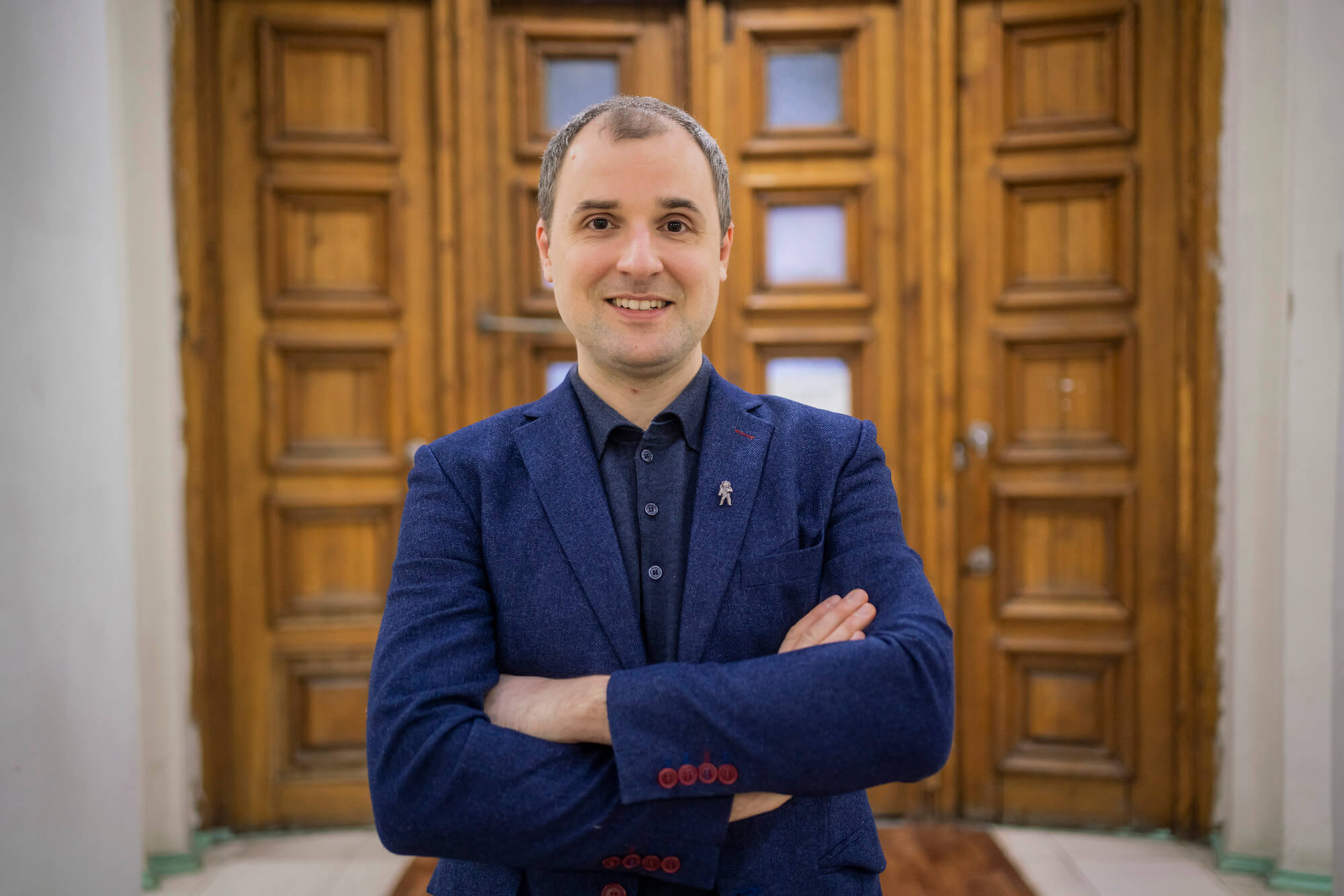
But he was not the only one. There was My Science and also other popular science projects and their advocates. They were different and yet had one thing in common—they could only envy Anton Senenko’s readership and popularity in the media.
Artem Albul, the founder of the YouTube channel Goddamn Rationalist, mostly dispelled myths about health and healthcare in his videos. After a year of work, he had only fifteen hundred followers. But one summer day in 2018, he noticed that ‘something was going on with the channel’—a bunch of new comments appeared, and the number of followers grew steadily, doubling by the next morning.
On the one hand, Artem was happy about it, but on the other hand, he was confused and could not understand what was going on. It was not until he logged into Facebook that he saw that Anton Senenko had published a post about Goddamn Rationalist on his page. They did not know each other, but after stumbling across an unknown YouTube channel, Senenko had watched all the videos in one go and wrote a few sentences about each one.
“According to all the rules of Facebook SMM, such posts are not supposed to work because they contain too many links, especially to external resources,” said Artem Albul. “But even Facebook algorithms are not an obstacle if the author writes sincerely, wholeheartedly, and with a deep understanding of the situation.”
Today, Goddamn Rationalist has nearly 280 thousand followers, and each video is viewed by dozens and sometimes hundreds of thousands.
Senenko tried to promote other popular science projects in a similar way, “to watch the number of their followers grow, like a junkie.”
“He believed in Kunsht even before we had anything to show,” Kyrylo Beskorovayny, co-founder of Kunsht, popular science media, said. “He wrote an essay for our first issue. He accompanied us to our first interview at Radio Arystokraty after that first issue was published. And he supported us in every possible way. Anton did so much to create a community of science promoters and bring everyone involved together.”
So Anton became a popularizer of science popularizers. At the same time, he always emphasized that he was primarily a researcher and refused to trade his lab for a TV host studio or a government office.
“Science is the best thing that can happen to you in life,” he said at the end of our first interview. “I can not imagine sitting in an office and flipping through papers. That would be the worst punishment anyone could come up with for me. But you never know what life has in store for you.”
“I do not want to give up science”
After February 24, 2022, Anton reevaluated many things in his life. That material things meant nothing and that a scratch on the car was no big deal. That it was great if you could pack your whole life into a small backpack. That you had to eat whenever you could, no matter how much you weighed. That you had to go to the bathroom as soon as you felt like it because you never knew when you’d have another opportunity. And that you must not put off living your life.
Senenko has not changed his attitude toward science, even though it cannot take as much space in his life now as it did before the full-scale invasion began. Without science, we have no chance of surviving with the kind of neighbor we have. Without it, we will not have long-range missiles and other high-tech equipment that you simply can not buy from other countries, no matter how much you’re willing to pay.
Therefore, Anton firmly believes that Ukraine needs its own DARPA—an analogy to the U.S. agency that develops advanced weapons.
But even if the war remained in the past, without science, we would have no weapons against new viruses, climate change, and, above all, the darkness in people’s minds.
Wrapping up our conversation, I asked Anton the same question with which we ended our first interview: Can he imagine a life outside of science?
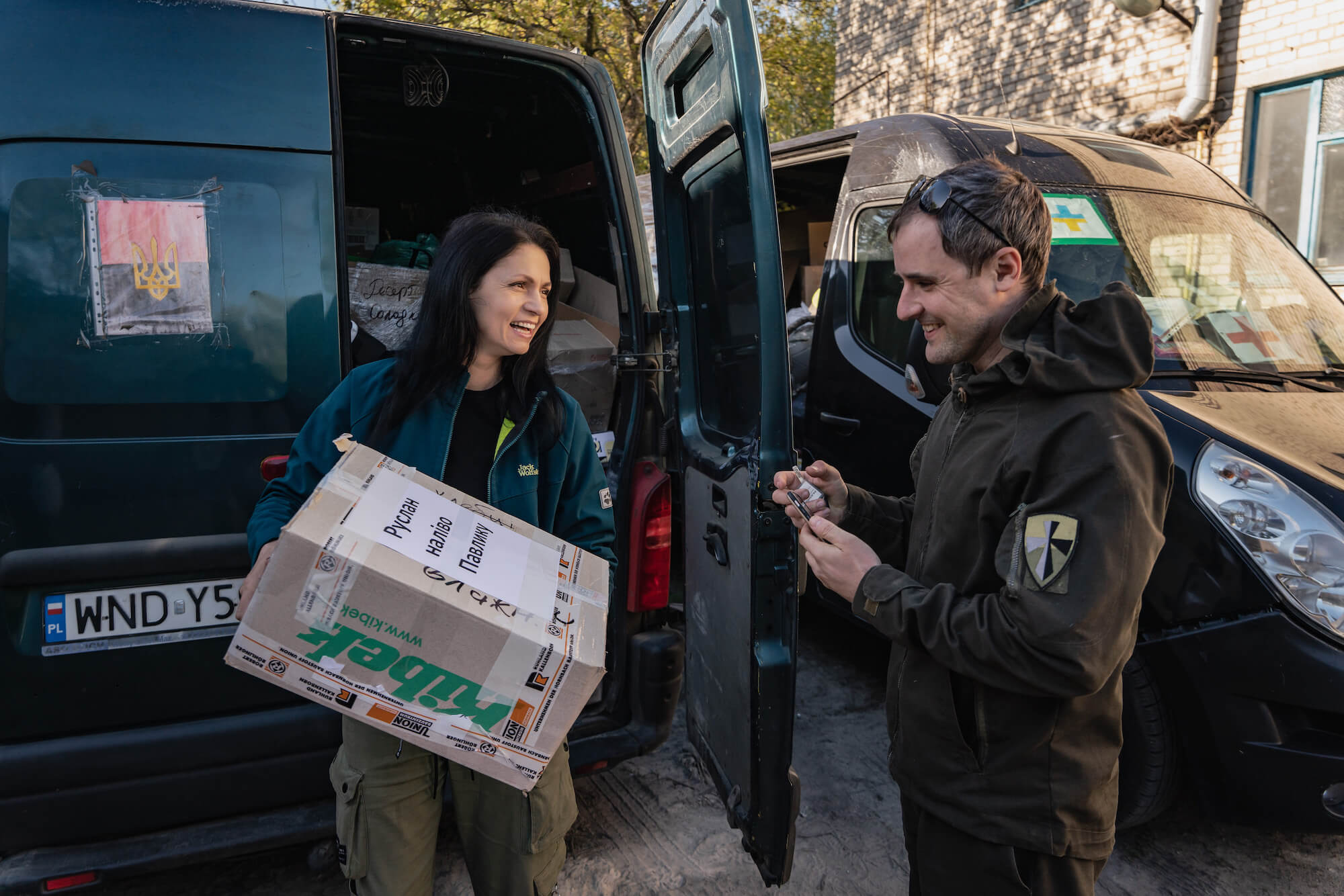
“I do not want to give up science,” he said. “But now I see that I can work effectively on many other things, and I like that. I want science to continue to live and develop in Ukraine, and I will do everything I can to contribute to that. But the experience I had in March and April, even if rather insignificant compared to what other people went through, showed me that planning ahead is a real challenge. Everything can change in a minute. Life will tell.”
